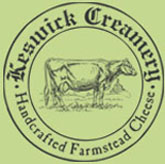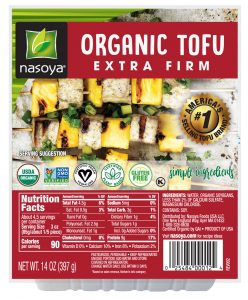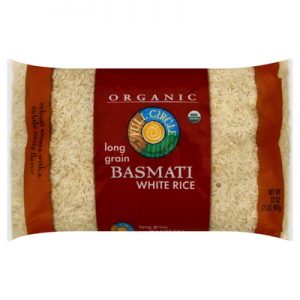For generations, the duties of care and provisioning for the family have been
carried primarily by women. Food preparation, serving, and work within professional
kitchens have fallen to women throughout history, yet the acclaim and credit has
historically gone to men, with women facing discrimination and structural biases that
their male counterparts do not contend with (Allen and Sachs 9). Women have
historically served the primary roles of food preparation, yet the modern culinary
industry remains predominantly male (Druckman 25). The disproportionate
representation of female-identifying food workers permeates all levels of the food
system yet is particularly noticeable within the modern restaurant kitchen and food
media. This paper seeks to discuss the challenges faced by women chefs in the modern
kitchen and food media, as well as the externalities brought about by the cultural
structure of differential treatment and familial responsibility. It should be noted that
this analysis will divide the kitchen along the traditional gender binary of “men” and
“women” and does not delve deeply into the experiences and disproportionate
challenges faced by nonbinary and LGBTQIA+ individuals in the kitchen for sake of
length and focus. The historical role of women as provisioners and caretakers within
both the family unit and society as a whole has profound implications for the experience
of women within the food chain. These effects are present within the professional
kitchen, food media, and more broadly the food service industry as a whole. The
differential treatment of women in these positions, alongside structural biases, have
created a system which perpetuates discrepancies in representation and access for
women across the food system today.
Prior to approaching the modern role of women within the restaurant kitchen
and food media, it is critical to gain a topical understanding of the historical context
behind these issues in order to inform our modern analysis. Women have occupied the
primary role of food preparations for generations, yet traditionally, it is men who are
highlighted as chef and awarded recognition and acclaim as a result of their work
(Whitaker). The word chef itself is derived from the French chef de cuisine, meaning
“head of the kitchen”, a term which is always conjugated in the male gender (Druckman
25). The word chef itself, therefore, carries an inherently gendered meaning. Until
recently, the prospects for women in the culinary sphere have been significantly limited,
with one author proclaiming, “in the late 1960s a career as an astronaut was considered
more promising for a woman than that of chef,” (Whitaker).
Women’s role as culinary caretakers has historically coincided with the ethics of
caretaking, with women performing the lion’s share of food-related tasks while retaining
little control, decision making power, or agency within the food industry as a whole
(Harris and Guiffre 28). While bearing the responsibility for nourishing others, they
often do not adequately nourish themselves as a result of the societal and systemic
obstacles they face (Allen and Sachs 1).
We must also look to the historical role of food media, cookbooks, and
advertising as it relates to women within the food system. Early cookbooks were
primarily filled with recipes to serve a family on a budget, as well as to serve to impress
your guests (Whitaker). Including substitutions for cooks without fully stocked pantries
was common, and recipes were typically measured in less standard terms, using
estimates and colloquialisms instead (Zafar 457). These books were primarily written by
and for white women, but heavily influenced
by African American foodways as African

Fig. 1 – Print marketing for Betty Crocker cake
mixes, which would eventually become the hallmark
of this character’s identity. – “Vintage Betty Crocker:
Perfect Vintage Cake Recipe.” Frugal SOS, Sara
Noel, 31 Aug. 2016, frugalsos.com/vintagerecipes/
perfect-cake-every-time/.
American women fulfilled a pivotal role
within the white kitchen without recognition
(Zafar 460).
In order to understand modern food
media, we must look to early food marketing
and advertising. One prominent media figure
during this time was the fictional Betty
Crocker, the spokeswoman for General Mills
created in the 1930s (Shapiro 29) ;(see fig. 1,
fig.2). During this time, Betty Crocker served
as the integral link between the consumers
and the corporatization of the
American food system. As
boxed food skyrocketed in
popularity due to the
convenience, low cost, and
effective marketing, companies

Fig. 2. Vintage Betty Crocker marketing. This image highlights the stress
placed on making baking faster and simpler for the modern housewife. –
Morioka, Lynne, et al. “Vintage Ads for the Ladies.” A Taste of General
Mills, 2 Sept. 2015, blog.generalmills.com/2015/08/vintage-ads-for-theladies/.
such as General Mills required
a human connection to their
customers if they wanted to
maintain the older view of home
cooking (Shaprio 30). In response,
these company figureheads were
generated (interestingly, the majority
were female) and featured heavily in
advertising and media.
Cakes were known as, and still are,
one of the most difficult tasks a home
cook can undertake, requiring time, a
multitude of ingredients, and lots of patience. Betty Crocker cake mix was General Mills’
ingenious response to this realization and was marketed extensively across the US in both
print ads, columns, and radio advertisements (Shapiro 38). This effective marketing strategy
and convenient new products planted Betty Crocker squarely into the American psyche, with
surveys conducted by General Mills indicating that by the early 1950s, 99% of American
housewives were familiar with the Betty Crocker name and line of products (Shapiro
33). Through building Betty Crocker into a household name, General Mills were not
only able to effectively aid their large consumer base in the transition into the new
methods of fast food preparation, but also played part in creating a cultural icon which
linked femininity to household duties, entertainment cooking, and subservience. These
themes are still present in the modern portrayal of women in food media.
Moving forwards into modern analysis, it is clear that the very foundations of
the restaurant kitchen create a highly gendered space with different connotations for its
male and female occupants. These structures affect women who work in the demanding
and male-dominated modern restaurant kitchen, fostering a workplace culture which
makes hazing and other discrimination against women commonplace (Harris and
Guiffre 28). The division of the modern restaurant kitchen into “hot” and “cold” section
frequently is a visual reminder of the separation of men and women within the
restaurant industry. The hot side of the kitchen, with stoves, grills, ovens, and
preparation stations tends to be male dominated while women primarily occupied the
cold side, responsible for pastries, soups, and sauces (Harris and Guiffre 32). This
divide coincides with the francocentric levels of essentialism in culinary personnel,
placing women in these spaces at a disadvantage in terms of opportunity for growth and
diversification within the culinary field (Druckman 22). In these male-dominated
environments, a common presumption of women’s lack of desire or ability to compete
worsens the divide, resulting in increased harassment and discredit being reflected upon
women than that faced by their male peers (Druckman 30).
These structural biases extend beyond the kitchen itself and into the sphere of
restaurant management and executives, with women occupying the lowest rungs of
management across the American restaurant industry, and generally are hired for
positions in which they supervise other women (Petrick 55). Women are afforded
proportionately less decision-making power than their male counterparts in comparable
positions and receive less pay (Petrick 55). The value of education and training is
another factor affecting the ability of women to occupy executive positions. Existing
training programs intended to develop employees interested in “working their way up”
to management are not sufficient, and are often under-used by women in particular,
who often do not utilize these programs for fear of not being seen as dedicated to the
current management of their facilities (Cobble 7). Women who applied and were denied
executive positions often held at least a four-year college degree, falling victim to the so called
“sticky floor” narrative which recognizes that while there is growth in the
availability of high-paying executive jobs for women, the sheer volume of women in low paying
industry jobs limits the mobility they are afforded (Petrick 58).
Women in the restaurant industry and more broadly the food system as a whole
are also burdened by the gendered landscape of the heteronormative family. Childrearing
and family care duties often fall to women even when they are employed in the
demanding and male-dominated restaurant industry (Maume et. al 990). Women
experience increased pressure to work long and irregular hours, while simultaneously
under-utilizing programs designed to balance work and family due to the need, whether
real or perceived, to show continuous commitment and dedication to both their careers
and the institution by which they are employed (Cobble 10). When returning home
women are still responsible for the continued labor associated with provisioning and
care of their families, irrespective of class, culture, or ethnicity (Allen and Sachs 2).
Despite the shifting status quo of the family, gender and family scholars continue
to argue that “men’s greater power within families, deriving from higher earnings in the
labor market, effectively shields them from domestic work (Maume et. al 993). This
feeding work, primarily undertaken by women, is unpaid and often goes unrecognized,
despite requiring significant mental, physical, and emotional labor. Women working in
food service also get significantly less sleep than men in similar positions, and also
experience more sleep disruption than men employed in the same industry (Maume et.
al 995). As women age, their sleep also becomes more disrupted, a phenomenon which
is not mirrored in their male counterparts (Maume et. al 995). The compounding effects
of being under-rested, underpaid, and overworked leave women bearing a
disproportionate burden when trying to balance work and family life. These structural
biases within the family reinforce the roles of subservience that women are occupying all
too-frequently within the restaurant kitchen (Allen and Sachs 4).
The representation of women in food media, as well as the ways in which
advertising, marketing, and the media shape the psyche of modern women must also be
discussed. While fictional culinary icons such as Betty Crocker have fallen to the
wayside and male chefs are commonly
the recipients of major awards,
accolades, and Michelin stars, the
modern culinary media is full of

Fig. 3. Gordon Ramsay, hot-headed chef of Hell’s Kitchen and
Michelin acclaim. – “Hell’s Kitchen with Gordon Ramsay –
Watch Episodes.” FOX, www.fox.com/hells-kitchen/
women (Druckman 27). However
prevalent the representation of
women chefs in cooking media may be
today, the portrayal of these women
stands in stark contrast to their male
counterparts. On one end of the
spectrum you have Gordon Ramsay
(Fig. 3) cursing and literally throwing
inadequate dishes in Hell’s Kitchen,
while on the other Ina Garten of

Fig. 4. Ina Garten, the comforting and motherly Barefoot
Contessa. – “Barefoot Contessa.” Food Network,
www.foodnetwork.com/shows/barefoot-contessa.
Barefoot Contessa fame (Fig. 4)
prepares family-style dishes, shares.
cocktail tips, and tags every episode
with the line “how easy is that?”. These
two very different representations can
be linked to the differential experiences
of men and women in the professional
kitchen, and perpetuate the division
between men as fiery, passionate, and
hotheaded chefs and women as comforting, domestic goddesses who focus primarily on
family-style and entertaining (Druckman 29). This presentation of women in cooking media
reinforces the gender binary which exists both within the restaurant industry and the
heteronormative family, with women placed into a role of subservience and provisioning
for families and yet still noting just how easy it is to fulfill these ideal roles (Allen and
Sachs 3).
The pressure faced by women to fulfill the ideal image promoted by the media,
specifically food media, has created a complex relationship between many women, food,
and their bodies. By exploiting what is referred to as “deliberate and reoccurring
manipulations of issues women face in their real lives,” the media is able to create an
image which women strive for, which contributes to the massive influence of diet culture
as well as the increased incidence of eating disorders (Allen and Sachs 3). This influence
permeates the majority of American media and affects women regardless if they are
employed in the food system or not. In fact, the average woman sees between 400-600
advertisements per day, totaling more than 250,000 messages by her 17th birthday
(Allen and Sachs 10). These advertisements strongly influence the concept of the ideal
body in mainstream media, with an obsessive focus on thinness and dieting, and
contribute to the transformation fantasy which plagues women and young girls alike
(Allen and Sachs 2).
Women’s roles in the food system are undeniably complicated, and vary widely
depending on class, employment, and economic status. However, an undercurrent of
differential treatment and structural obstacles carries significant implications in the
lives of women involved in the industry. Women bear disproportionate stressors of food
provisioning and family care compared to their male counterparts and face increased
hazing and discrimination as a result of the francocentric nature of the restaurant
kitchen. These systematic and structural biases can be observed throughout history,
from the days of Betty Crocker to the modern representation of female chefs in media
today. Women experience differential treatment and disproportionate barriers to
success within the food system as a result of both structural biases and the historical
duties and roles traditionally associated with femininity, and without continued efforts
to level the playing field and reduce these biases will continue to be underrepresented
and underappreciated for their efforts in and contributions to the food system as a
whole.
Works Cited
Allen, Patricia, and Carolyn Sachs. “Women and Food Chains: The Gendered Politics of
Food.” International Journal of Sociology of Food and Agriculture, vol. 15, Apr. 2007.
Shapiro, Laura. “‘I Guarantee’: Betty Crocker and the Woman in the Kitchen.” From Betty
Crocker to Feminist Food Studies: Critical Perspectives on Women and Food, edited by
Arlene Voski Avakian and Barbara Haber, University of Massachusetts Press, 2005, pp.
29–40, www.jstor.org/stable/j.ctt5vk2tn.6. Accessed 26 Apr. 2020.
Cobble, Dorothy Sue. “‘Practical Women.’” Labor History, vol. 29, no. 1, Winter 1988, pp. 5–
31. EBSCOhost, doi:10.1080/00236568800890011.
Druckman, Charlotte. “Why Are There No Great Women Chefs?” Gastronomica 10.1 (2010);
pp 24- 31.
Harris, Deborah A., and Patti Giuffre. ““The price you pay”: how female professional chefs
negotiate work and family.” Gender Issues 27.1-2 (2010): 27-52.
Harris, Deborah Ann., and Patti Giuffre. Taking the Heat Women Chefs and Gender Inequality
in the Professional Kitchen. Rutgers University Press, 2015.
Maume, David J., Rachel A. Sebastian, and Anthony R. Bardo. “Gender differences in sleep
disruption among retail food workers.” American Sociological Review 74.6 (2009): 989-
1007.
Petrick, Gabriella. “Lonely at the Top: Women Food-Service Executives.” Cornell Hotel and
Restaurant Administration Quarterly, vol. 39, no. 3, Sage Publications, June 1998, pp.
54–59, doi:10.1177/001088049803900311.
Whitaker, Jan. “From Patrons to Chefs, a History of Women in Restaurants.” Boston
Hospitality Review, vol. 3, no. 3, School of Hospitality Administration, Aug. 2015,
https://doaj.org/article/11c5fde92a9c4ea59baa5558346ca8b5.
Zafar, Rafia. “The Signifying Dish: Autobiography and History in Two Black Women’s
Cookbooks.” Feminist Studies, vol. 25, no. 2, 1999, pp. 449–469. JSTOR,
www.jstor.org/stable/3178690. Accessed 17 Apr. 2020.
Images:
Fig. 1. “Vintage Betty Crocker: Perfect Vintage Cake Recipe.” Frugal SOS, Sara Noel, 31 Aug.
2016, frugalsos.com/vintage-recipes/perfect-cake-every-time/.
Fig. 2. Morioka, Lynne, et al. “Vintage Ads for the Ladies.” A Taste of General Mills, 2 Sept.
2015, blog.generalmills.com/2015/08/vintage-ads-for-the-ladies/.
Fig 3. “Hell’s Kitchen with Gordon Ramsay – Watch Episodes.” FOX,
www.fox.com/hellskitchen/
Fig. 4. “Barefoot Contessa.” Food Network, www.foodnetwork.com/shows/barefoot-contessa.






Recent Comments